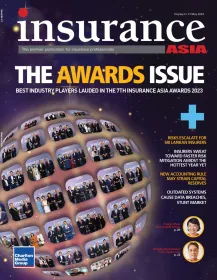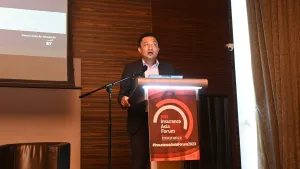
Higher domestic rates could raise investment income of Japanese life insurers: AM Best
Japanese life insurers may face a higher debt burden when they need to refinance their existing debt.
The industry is focusing on managing the economic solvency ratio (ESR) to better manage interest rate risk and asset-liability matching. If domestic interest rates continue to rise, investment income is expected to gradually increase over the medium term, according to AM Best.
The risk-adjusted capital of most insurers remains very strong, although regulatory solvency margin ratios have declined due to changes in unrealized gains and yen weakening.
In the scenario where domestic interest rates remain elevated over the medium term, Japanese life insurance companies may face a higher debt burden when they need to refinance their existing debt.
This is because the cost of borrowing is likely to be higher in a rising interest rate environment. The impact of higher debt costs can put pressure on the financial performance of insurers.
Challenges
Although challenges persist, including Japan's ageing and shrinking population and potential economic volatility, Japanese life insurers are well-capitalized to navigate market fluctuations, given their substantial investments in equities and foreign securities.
However, some capital volatility can be expected in the short term.
Improvements in core profits are anticipated for Japanese life insurers in fiscal year 2023, as the effects of pandemic-related losses wane, particularly with declining COVID-19-related benefit payments.
However, elevated currency hedging costs may continue to affect net interest margins.
ALSO READ: Indonesia’s non-life insurance outlook grim: AM Best
Forecast
Despite long-term challenges, the Japanese life insurance market is expected to remain stable over the next 12 months, with most insurers well-prepared to handle market volatility and economic uncertainty.
Japanese life insurance companies have seen positive top-line growth in recent years, but their bottom lines have been impacted by pandemic-related losses and higher foreign-currency hedging costs in fiscal year 2022.
The expectation is that premium income will remain stable for the remainder of fiscal year 2023, with core profits improving due to the drop in COVID-related claims.
Most Japanese life insurers have maintained very strong capital positions, which will help them withstand potential volatility in domestic and global financial markets, as well as potentially higher domestic interest rates.
The expectation is that operating performance will improve due to higher core profits and a rise in investment income as domestic interest rates increase.
Foreign interest rate movements have a significant impact on the premium income of Japanese life insurers.
Strong sales of foreign currency-denominated products resulted from the significant difference between domestic and foreign interest rates, with the US Federal Reserve raising its benchmark lending rate while the Bank of Japan maintained its short-term policy rate.
This led to a nearly 16% increase in premium income in fiscal year 2022.
While increased sales of foreign currency-denominated products will boost premium income, profit margins for saving-type products are narrow, limiting the impact on the insurers' bottom lines.











 Advertise
Advertise












